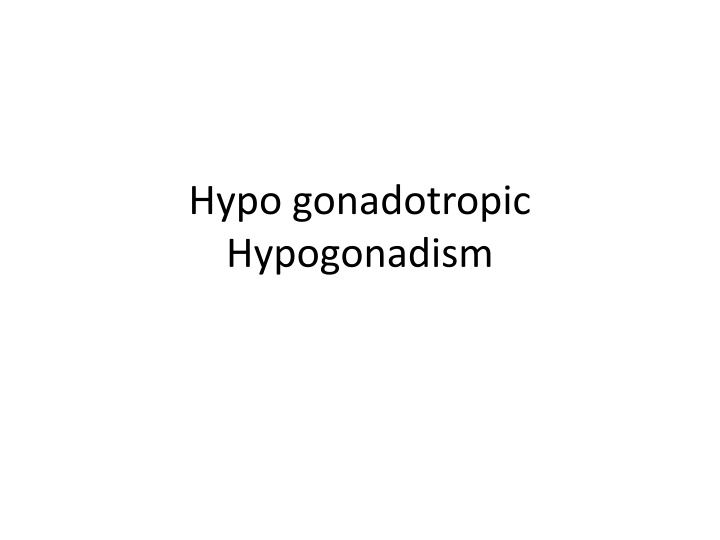
Hypogonadism: Causes, Symptoms, and Treatment
Hypogonadism, including hypo-gonadotropic and secondary types, can result in decreased sperm and testosterone production. Learn about congenital abnormalities, eunuchoid proportions, and treatment options for restoring fertility and secondary sex characteristics.
Download Presentation

Please find below an Image/Link to download the presentation.
The content on the website is provided AS IS for your information and personal use only. It may not be sold, licensed, or shared on other websites without obtaining consent from the author. If you encounter any issues during the download, it is possible that the publisher has removed the file from their server.
You are allowed to download the files provided on this website for personal or commercial use, subject to the condition that they are used lawfully. All files are the property of their respective owners.
The content on the website is provided AS IS for your information and personal use only. It may not be sold, licensed, or shared on other websites without obtaining consent from the author.
E N D
Presentation Transcript
Hypo gonadotropic Hypogonadism
Secondary hypogonadism is usually associated with similar decreases in sperm and testosterone production. Secondary hypogonadism is less likely to be associated with gynecomastia.
CONGENITAL ABNORMALITIES Sexual differentiation in all of these disorders is normal male . Phallic development during the third trimester is subnormal . Childhood growth is normal if gonadotropin deficiency is an isolated event . Pubertal development is incomplete or even absent, depending upon the degree of gonadotropin deficiency.
Eunuchoid proportions result when epiphyseal closure is delayed because of subnormal serum testosterone and its conversion to estradiol. An exception is if growth hormone is also subnormal . Midline defects (ie, cleft lip/palate) , unilateral renal agenesis ,uni or bilateral cryptorchidism , syndactyl or other skeletal abnormalities hyposmia or anosmia .
TREATMENT To develop secondary sex characteristics To build and sustain normal bone and muscle mass To restore fertility
